[Noreen gets uncomfortable in a good way at a new show centering around human rights violations, and the importance of keeping history education true to history. — the Artblog editors]
Rarely do historical exhibitions move viewers to tears. However, Cash Crop, a traveling collection of artifacts and artwork by Stephen Hayes, does exactly that–augmenting African-American history with artistic beauty and poignant visual narrative. Now on view at the African American Museum, Cash Crop strikes the viewer with the undeniable horrors of the Trans-Atlantic slave trade, all while comparing contemporary human rights violations with those committed in the past.
Cast and chained figures
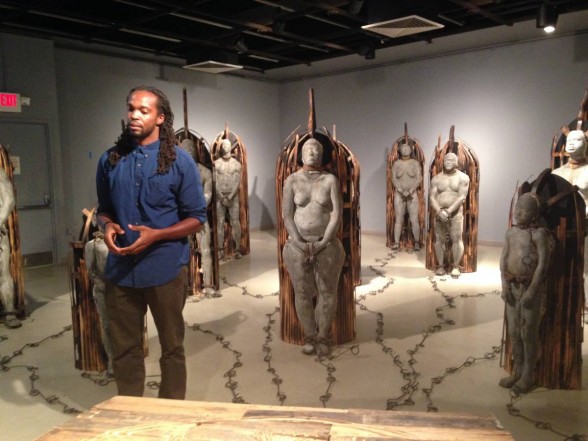
Growing up in North Carolina, Hayes attended North Carolina Central University for undergraduate studies, before moving on to earn a MFA in sculpture at Savannah College of Art and Design. It was there that he conceived of Cash Crop. Beginning as his thesis show in 2010, the collection has since grown, traveled to cities across the South, and continues to exhibit among different historical societies, gallery spaces, and museums.
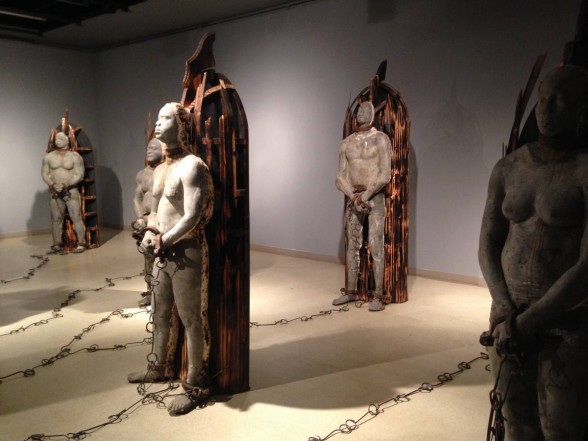
Perhaps the most emotionally crucial segment of the exhibition is the piece that gives the show its title. “Cash Crop,” a piece composed of 15 life-sized casts of the artist’s friends and family, is one of the original works from Hayes’s thesis exhibition. The 15 statues, each confined by shackles and bound to a wooden shipping pallet, represent the 15 million African people forcefully brought to the New World between 1540 and 1850. Viewers may walk in between them, stepping over and sometimes on the iron chains they are bound by, all evoking a feeling of trepidation and discomfort.
The statues, cast in fragile concrete, are arranged in a triangular formation on the third floor of the museum–a composition that reminds me of Adrian Piper’s “Out of the Corner”. The strong but agonized expressions, the scale and immediacy of the figures demand the viewer’s attention. Onlookers cannot escape the discomfort this piece makes them feel–thus, the cruelty of this moment in American history cannot be ignored.
Inescapable realities
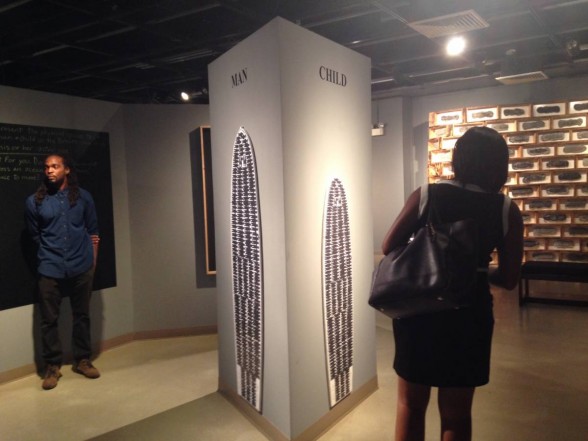
The entire show makes the atrocity of the Trans-Atlantic slave trade very clear. “Man, Woman, Child,” a triptych of slave ship diagrams, represents the personal space allotted on the oceanic journey to each male, female, and child captive, respectively. This is the amount of space an African woman would have occupied for a two- to four-month journey.
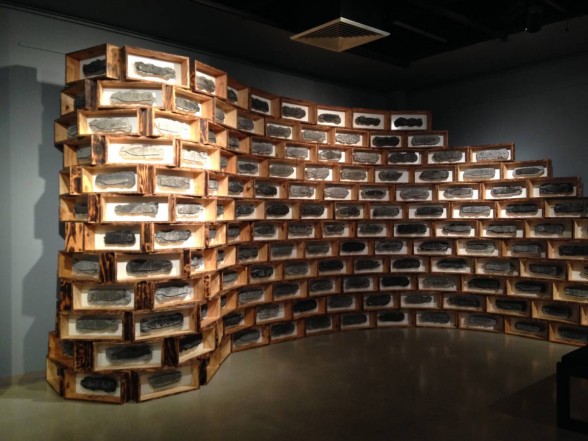
Learning from history instead of overwriting it
During the artist’s experience in high school, curriculum and textbooks failed to underscore the brutality and inhuman conditions that African slaves suffered en route to the States. In recent years, many executive board members and political parties have attempted to alter the content of school textbooks, specifically chapters regarding slavery. Some, such as the Texas Board of Education, have proposed to rename slavery the “Atlantic triangular trade,” removing all hints of the cruel reality.
But this injustice is essential to the African-American narrative, and many are upholding its necessity in education. Historical councils and nonprofits, such as the National Council for History Education and Americans United for Separation of Church and State, have vehemently protested and dismantled attempts to change history textbooks. With this in mind, the African American Museum is currently reaching out to local and suburban schools to encourage class field trips, as enrichment to their U.S. history curriculum.
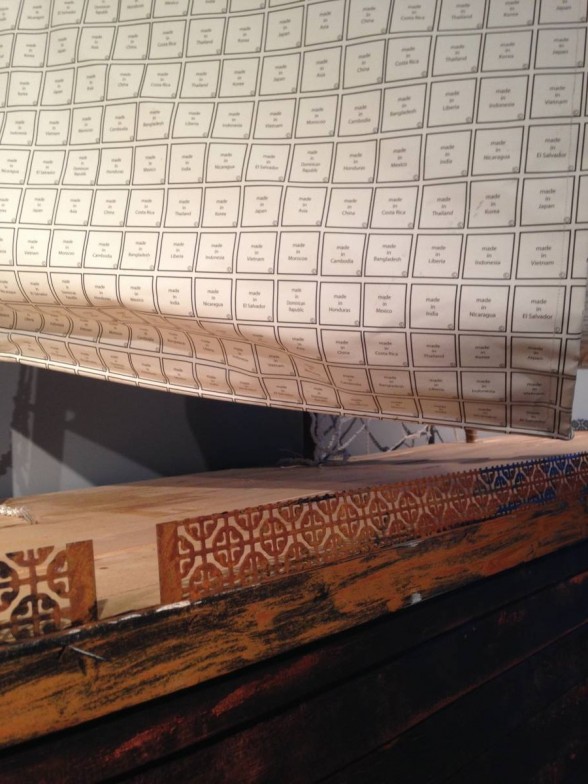
Hayes also sees the atrocities committed by the slave trade resurfacing in contemporary economics. This facet of Cash Crop is most clearly represented in “Made In,” a piece he created in 2012. In “Made In”–a model ship made from reclaimed wood–the artist fashions sails from production labels, each representing a country without labor rights. All too familiar with these labels, viewers then recognize their own economic role in slave labor.
Although richly historical, the show boldly bears a connection between the tragedies of the past and present. The familiar items in the show–the wooden shipping pallet, the clothing labels—will continue to cause viewers to rethink their relationship to the artwork. As the breathtaking exhibit continues to travel and reach publics across the nation, it is the hope of the artist, historians, and educators that the history of African-Americans in slavery and its modern-day echoes will remain in the collective conscious of all Americans.
Cash Crop is on view at the African American Museum, 701 Arch St., Philadelphia, PA 19106, until Jan. 5th, 2015. Visiting hours are Thursday – Saturday from 10 am to 5 pm, and Sunday from noon to 5 pm.









